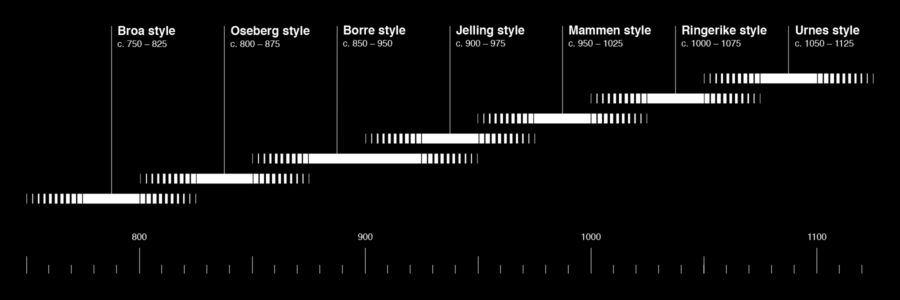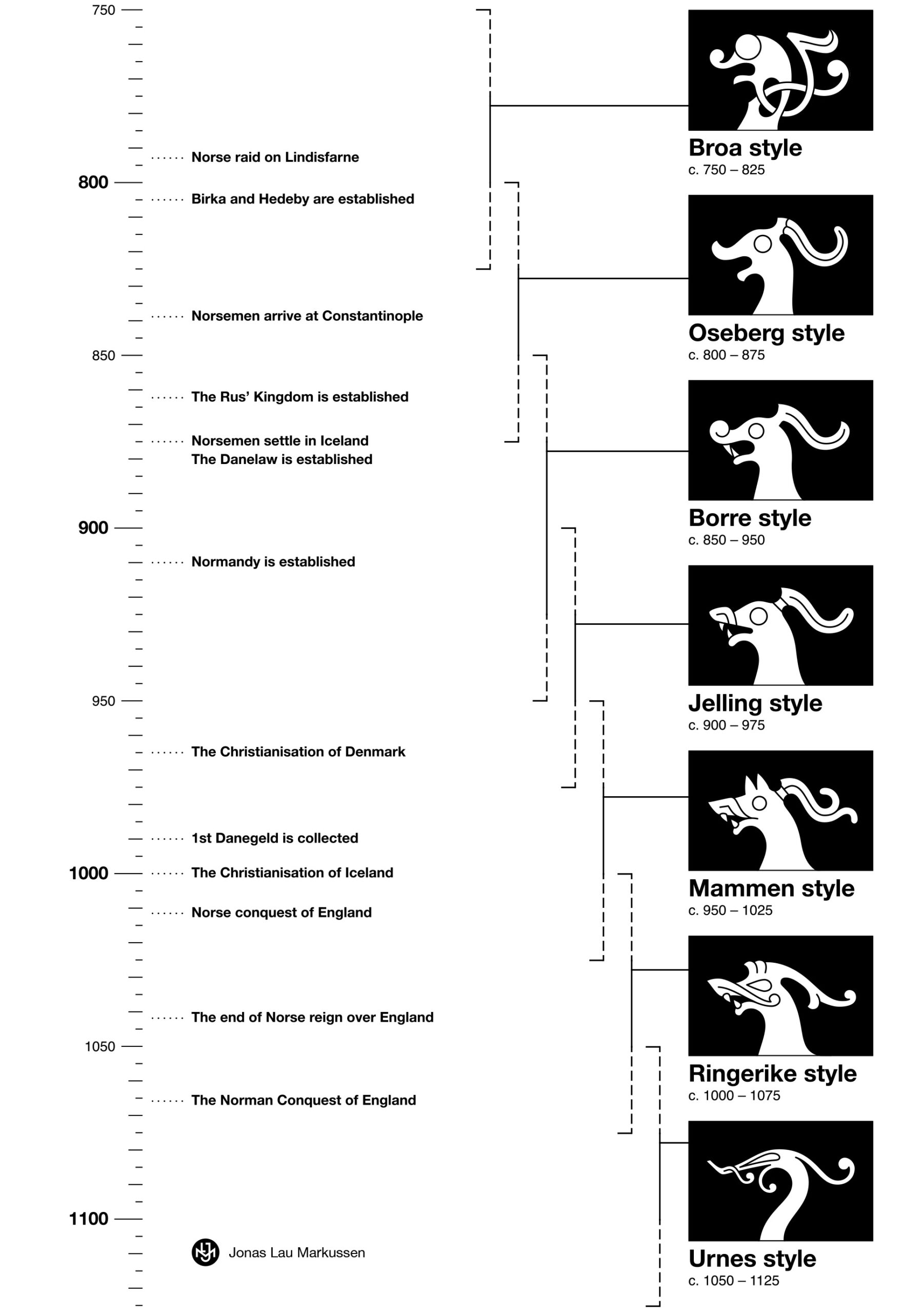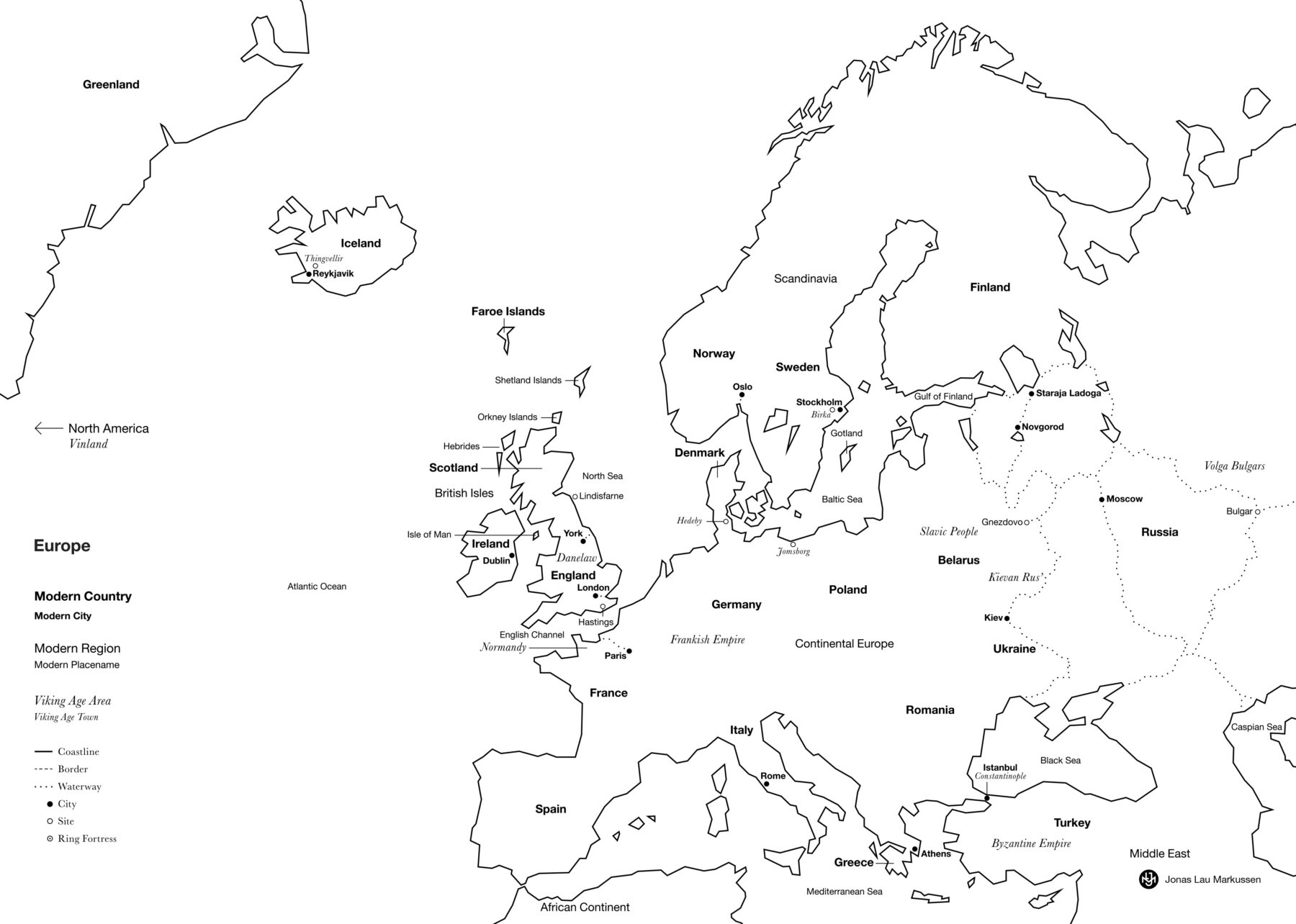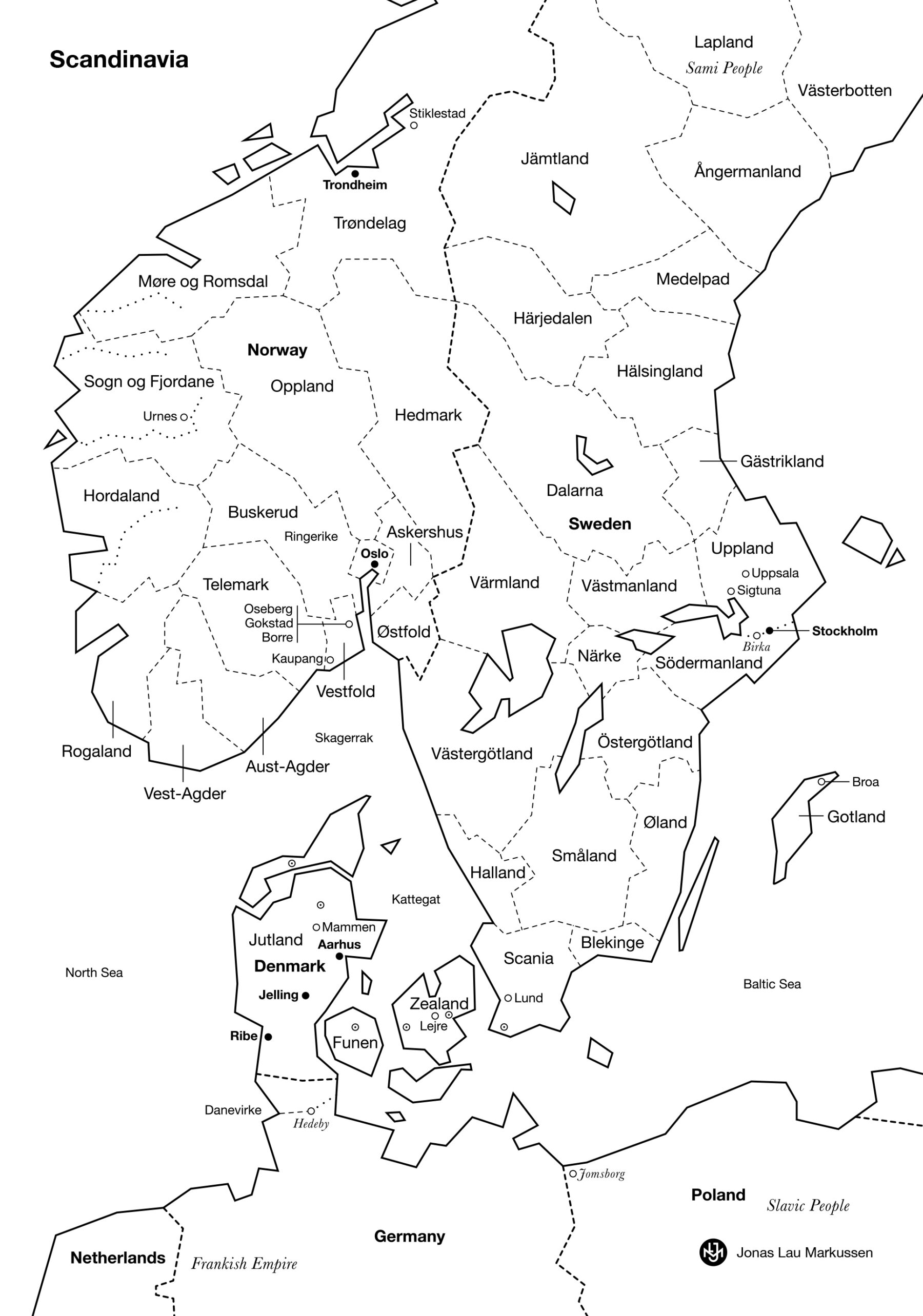
Viking Art – Introduction
December 20, 2016
The Anatomy of Viking Art
- Introduction
- Broa Style
- Oseberg Style
- Borre Style
- Jelling Style
- Mammen Style
- Ringerike Style
- Urnes Style
Norse artworks are some of the only first-hand sources concerning the people inhabiting Scandinavia in the Viking Age. But it may be very difficult and daunting to decipher the individual artworks, and even more difficult to try to recreate them, without a mental model of how the individual pieces fit together, drawn from extensive study of the works of experienced scholars. Often, the surviving original artworks are presented with little or no context, and often are also damaged or distorted due to wear and the effects of time. This guide is intended to paint a broad but cohesive picture of the styles and their development over time. It is by no means meant to be an exhaustive resource, but instead, to act as a stepping stone to help you understand the central concepts of Viking Age art.
I am neither a historian nor an archaeologist. My background is in graphic design and architecture, and this guide is intended to be the resource I wish I had when I began to try to understand the art of the Norse, and made my first unsuccessful attempts to recreate authentic artwork based on the Viking Age art styles. The guide is based on the work of knowledgeable scholars and my own studies of the archaeological artefacts. Owing to the lack of reliable documentation, and because of possible copyright concerns, all the illustrations in this guide are my own new designs, based on the principles of original Viking Age art. Creating these has been a great learning experience, and has contributed tremendously to my understanding of this art and how it is constructed.
I hope this guide will assist you in your quest to become familiar with the styles of the Norse, and get you up to speed faster than I was able to, by bypassing the otherwise challenging learning curve. I have skipped all the scholarly history and the who’s who of academia in favour of getting right to the matter at hand: Viking Age art.
The thematic division of the main characteristics under the headings of shapes, outlines, flow, pattern, composition and motifs are largely based on Signe Horn Fuglesang’s work, though I have made a few adjustments to fit the purposes of this guide. The art styles of the Viking Age are very much products of the times in which they developed. By including historical timelines and maps, I hope to help you better anchor the styles and their characteristics to the historical events and culture of their times, and also to make this a quick reference guide when creating artwork for re-enactment-purposes. This guide is structured chronologically, with the seven styles ordered from the earliest to the most recent, but be aware that there is still scholarly debate about the definition and categorisation of some of the styles. What I have presented here is, to my knowledge, the most plausible representation yet of the actual historical development, based on what we know so far. I encourage you to do your own research, and I have made it as easy as possible for you to look up any items referenced, or historical events mentioned in this guide.
I have published this guide under the cc-by-nc-sa license, which essentially means that as long as you copy and share the content without receiving compensation, you may do so as much as you like. So please share the knowledge with whomever you know who might find it interesting or useful.
I hope this guide will assist you in your study of Viking Age art, and also help you to recreate beautiful, authentic Norse artwork.
Enjoy!
Jonas Lau Markussen




